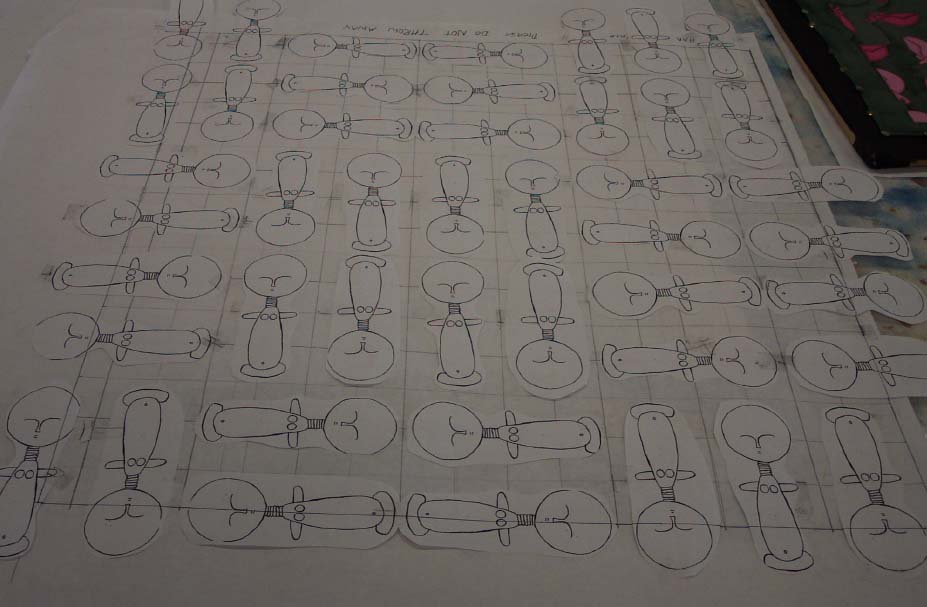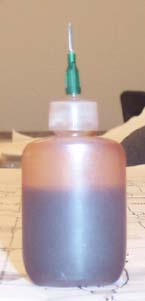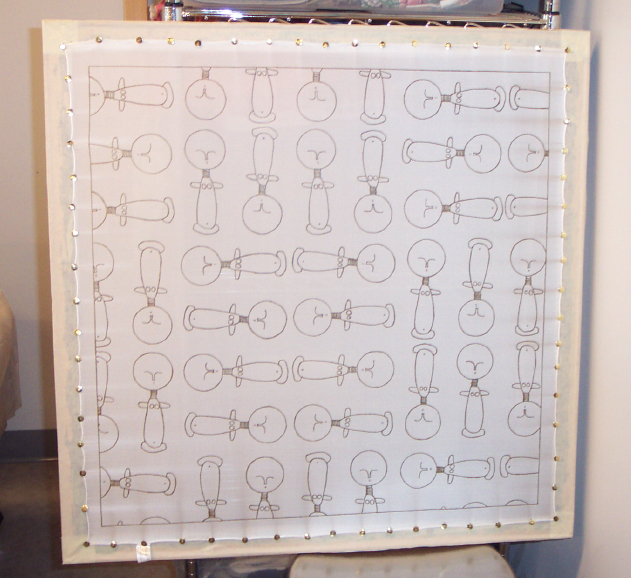|
I am taking Crafts 363, Surface Design.
In this class we are taught how to silk paint, and different ways to create
surface designs. I will go through the process of making a silk painting
on this page.
Necessaries:
1) Piece of silk. We use
handmade silk scarves.
2) Canvas stretcher. (Use
a size that fits your piece of silk).
3) Tacks. (Flat-topped thumbtacks).
4) Resist.
5) Dyes.
6) Chemical Water.
7) Soda Ash.
8) Brushes.
9) Design on paper that is
actual size the completed silk will be.
10) 7B Drawing pencil.
|
|
 |
The first step in the
silk painting process is to make a drawing that will be the actual
size of the finished silk. (Click on pictures
on this page for larger image.)
|
| |
|
Next you stretch your silk across your
canvas stretcher. Use flat-topped thumbtacks for this. Start with one
tack at each corner. Then tack the center of each side, putting one tack
in, then putting the tack directly across from it in. Then put a tack
in the middle of each of those 3 tacks on each side. Still working on
putting on one across from the other. The silk should begin to tighten
and be sort of drumlike. The wrinkles or creases in the silk will disappear.
Continue putting in the tacks until they are about an inch apart. (It
is normal for your thumb to hurt.)
Once your silk is stretched you are ready
to transfer your drawing to the silk. Make sure you are working on a clean
surface. Lay your drawing down flat on the table. You might want to tape
it down to keep it from sliding around.Turn your canvas stretcher over
so that the silk is face down on the drawing. You should be able to see
your drawing through your silk.
Use your 7B pencil to trace your drawing
onto the silk. The drawing should be on the back of where you will be
applying paint. So make your lines dark enough and thick enough to be
seen. It is very important to use a 7B pencil.
 |
Flip your
stretcher back over so that the side with the thumbtacks is face up.
It is easiest if you put white paper beneath the silk so that your
transferred lines show up better. Figure out how to apply resist on
a seperate sheet of paper or paper towel. Apply even pressure to your
resist bottle, let the tip lightly touch the fabric (or paper if you
are testing) and trace over lines you have made. You want your resist
line to be an even thickness, about an 8th of an inch thick. When
you feel comfortable with your practice work, start working on your
silk. |
|
| |
|
|
 |
This is my silk once
I completed applying the resist. Notice how the thumbtacks are in
place. |
|
Hannah Pittman
|
|
|